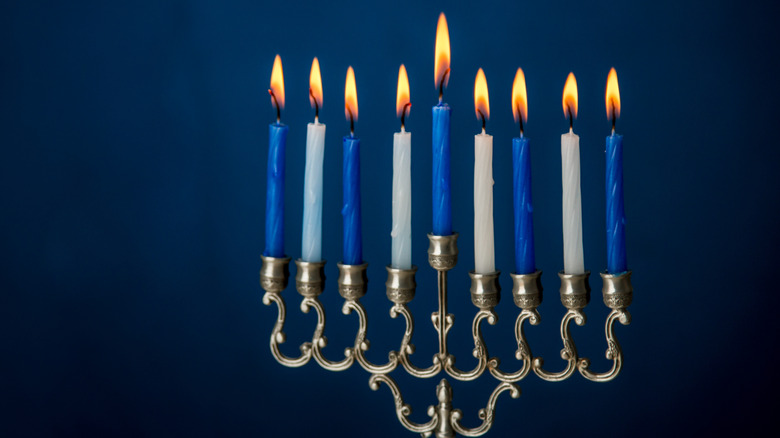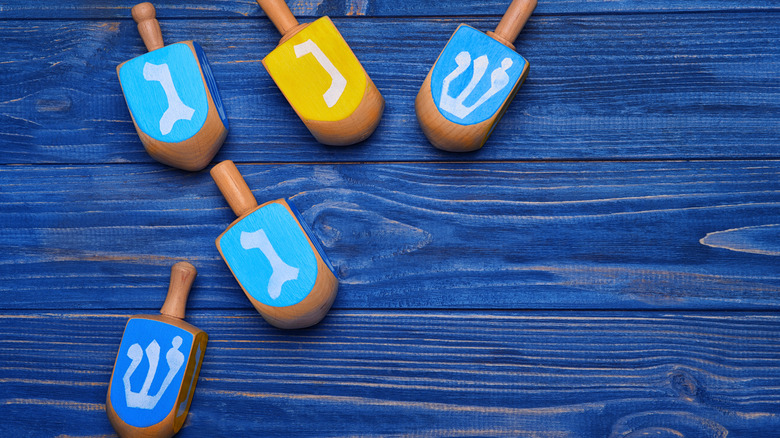Here's Why Blue And White Are The Colors Of Hanukkah
Nearly all holidays have their colors, even if many are covered by patriotic shades of the flag, and Hanukkah is no different. Blue and white (or silver, some say) have come to represent the Jewish holiday, also known as the Festival of Lights, which lasts eight days and nights sometime between late November to mid-December, depending on the year. But how did blue and white become the colors of Hanukkah? And who made that decision?
To be sure, there are plenty of theological connections between Judaism and the shade of blue prominently displayed during Hanukkah. That particular hue is found on the tallit, the traditional Jewish fringed prayer shawl that is worn at synagogue, bar or bat mitzvahs, and Jewish weddings. This blue fringe comes from tekhelet, a blue snail dye that is mentioned throughout the Torah, according to the Biblical Archaeology Society.
In 1864, the Austrian Jewish poet Ludwig August von Frankl wrote a poem, "Judah's Colors," in which he named blue and white as the colors of the future Jewish homeland. "When sublime feelings his heart fill, he is mantled in the colors of his country ... Blue and white are the colors of Judah; white is the radiance of the priesthood, and blue, the splendors of the firmament," the poem reads (via Mental Floss). The colors would become the flag of Israel when it was founded in 1948.
Hanukkah's colors and suburban America
The rise to prominence of blue and white as the colors of Hanukkah have less to do with religious meaning, and much more to do with 20th century American culture, according to scholars in the field. As Jewish families moved from cities to the suburbs as part of a larger national trend in the post-World War II era, Christmas became a tricky thing for Jewish parents to navigate. "There was pressure on Jewish kids to participate in celebrating the Christmas pageantry that went on in public schools," Dianne Ashton, a professor of religion and American studies at Rowan University and the author of "Hanukkah in America: A History," told Time.
Jewish parents found themselves playing up the significance of Hanukkah, per The Conversation, even though it didn't have the same religious importance as the High Holy Days, Rosh Hashanah, and Passover. Soon, Hallmark saw an opportunity to sell Hanukkah cards, designed in blue and white with silver accents — something that made Hanukkah visible in public to non-Jews and carried through to other ways of displaying holiday cheer. Today's Hanukkah decorations often look just like Christmas decorations, but they're blue and white. Lights are blue and white, instead of green and red. So-called Hanukkah bushes are in place of Christmas trees, according to Kveller. "Again, this is participating in the seasonal event that the whole country is doing," said Ashton, "but with the markers of showing that you're doing it in a Jewish way."

